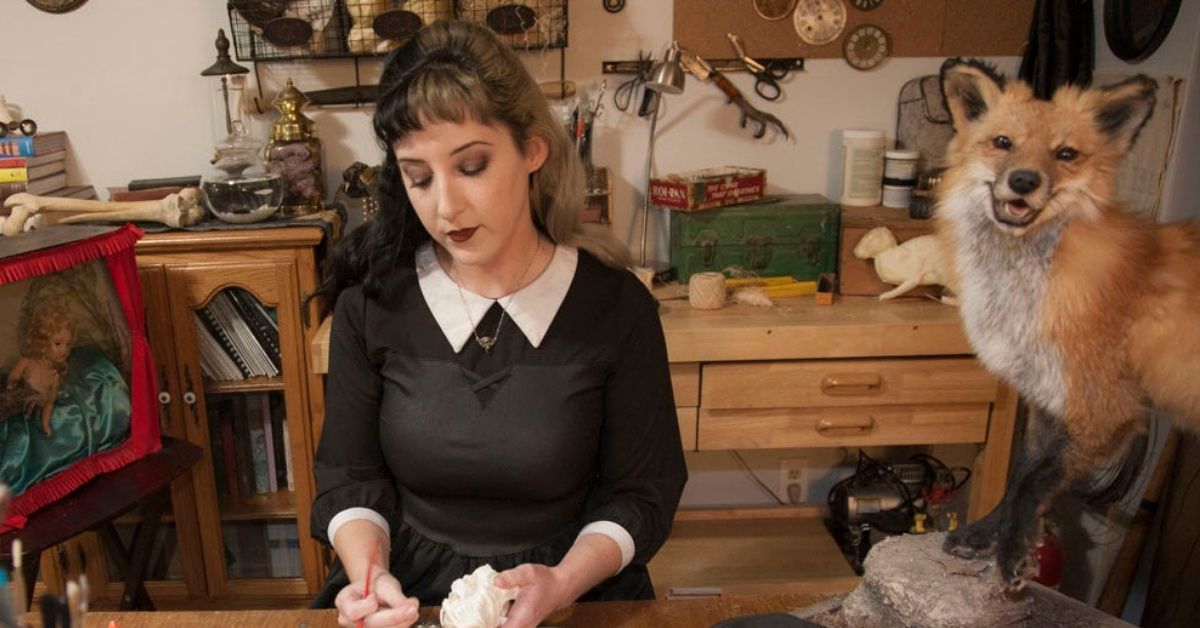A taxidermist, whose brush with death sparked a morbid fascination with stuffing dead animals, has explained how she uses an army of flesh-eating “employees" to help her strip their bodies bare.
But Simone Smith's “colleagues" would make the average worker wince, as every day she shares her studio in Kansas City, Missouri, USA, with thousands of carnivorous beetles, used to pick the flesh from her animal carcasses.
Simone, 30, said her passion for taxidermy was fired while she was fighting a bone tumor so rare that only 200 cases have been recorded worldwide and finds the macabre process “therapeutic," adding:
“With more time on my hands to wander around, I started noticing all the roadkill lying by the pavements."
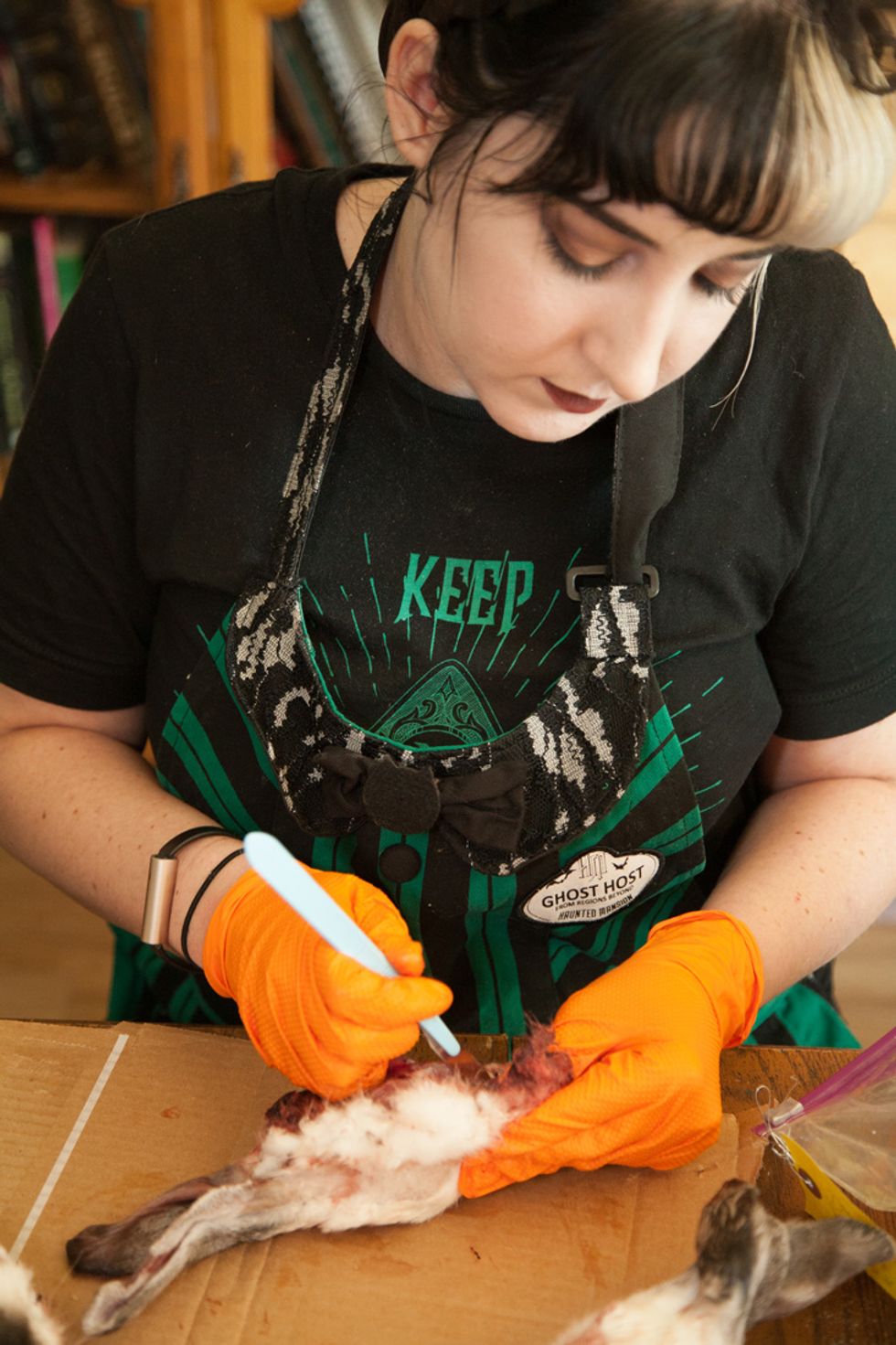
She continued:
“It really saddened me, seeing the animals just left there, with no one coming to take them away, so I started collecting them and taking them home."
“I had no experience in the field, so found some online guides to basic taxidermy and began dissecting and mounting the roadkill I found."
“At that point I was really very unhappy and I felt that by putting these torn-up animals back together, I was putting myself back together, too."
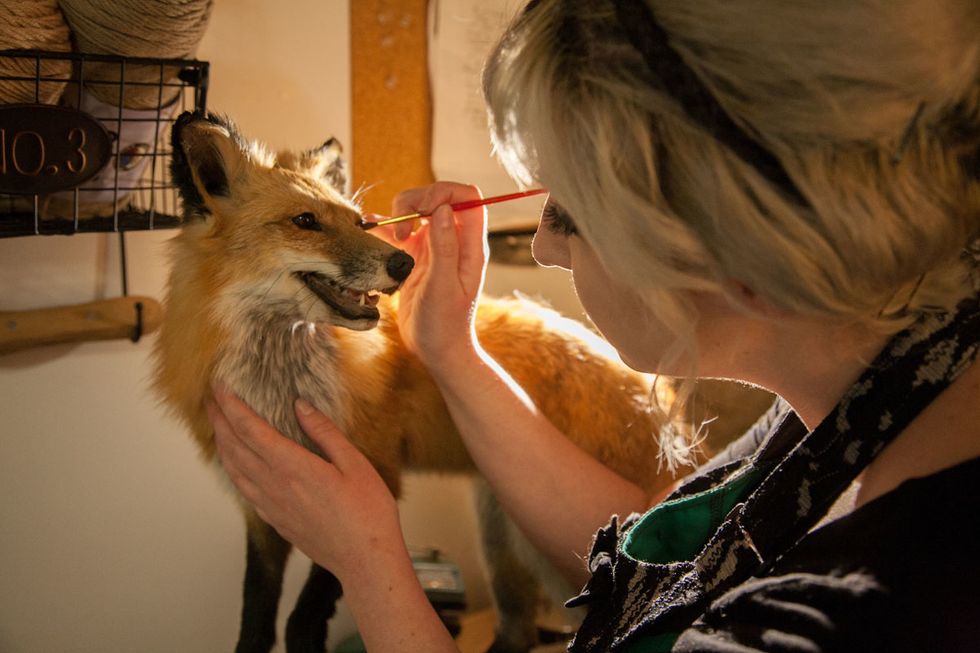
She added:
“Having been close to death myself and feeling pretty mangled from it, I felt there was a connection between me and the dead animals I was fixing."
Now a full-time taxidermist, Simone stuffs and mounts people's beloved pets and hunters' trophies, as well as making 'wet specimens' – bodies kept in jars – and producing skulls, which requires the help of her flesh-eating pals.
Now cancer free she continued:
“If somebody wants their pet's skull, I take out the eyes, scoop out the brain and then peel off the skin, but I use the beetles to get rid of the meat beneath the skin, which usually takes about a day or two."
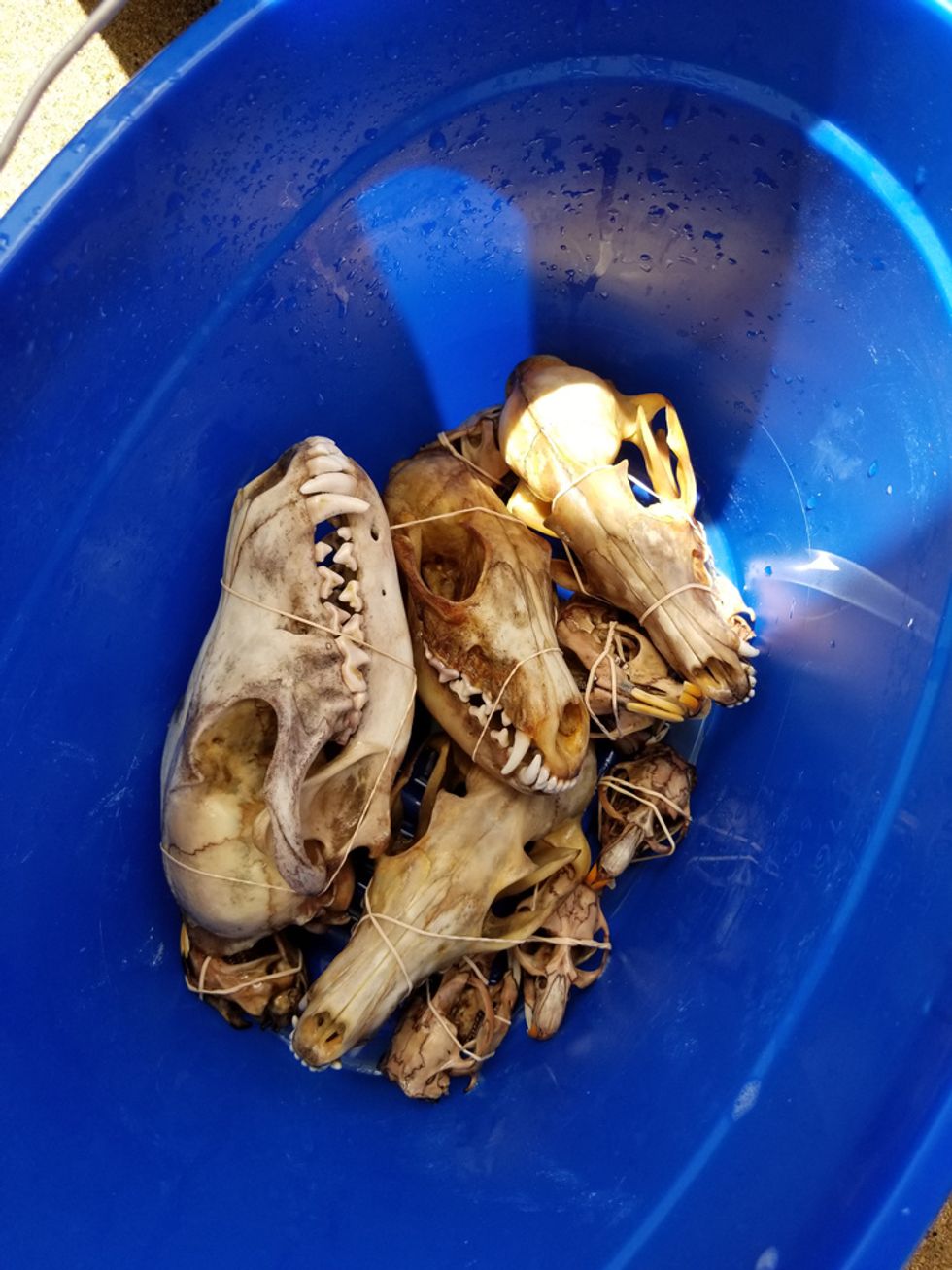
She added:
“They really are excellent employees. They do their job efficiently and in return they get food and board!"
Diagnosed with a tumur inside her femur, or thighbone, in 2011, while she was studying for an art degree at Humboldt State University, California, Simone, who has a boyfriend, Andrew, 33, had major surgery to scoop out the tumor, before the resulting hole was filled with putty.
Unable to resume her course, because of the four-month recovery from the operation, then just 23, she fell into deep depression, feeling isolated from her friends and guilty for living off her parents' handouts.

Doing odd jobs to scrape a living, then based in Eureka, California, she soon became inspired to stuff dead animals – finding it really lifted her mood.
She said:
“When I'm working on an animal body, I have a euphoric feeling that can't be replicated anywhere else. I don't know how to explain it, but I wish other people could know the feeling."
“Being inside the bone, my cancer was incredibly rare. It was a very isolating and difficult experience, so it was wonderful to have found something that stopped me from dwelling on my disease."
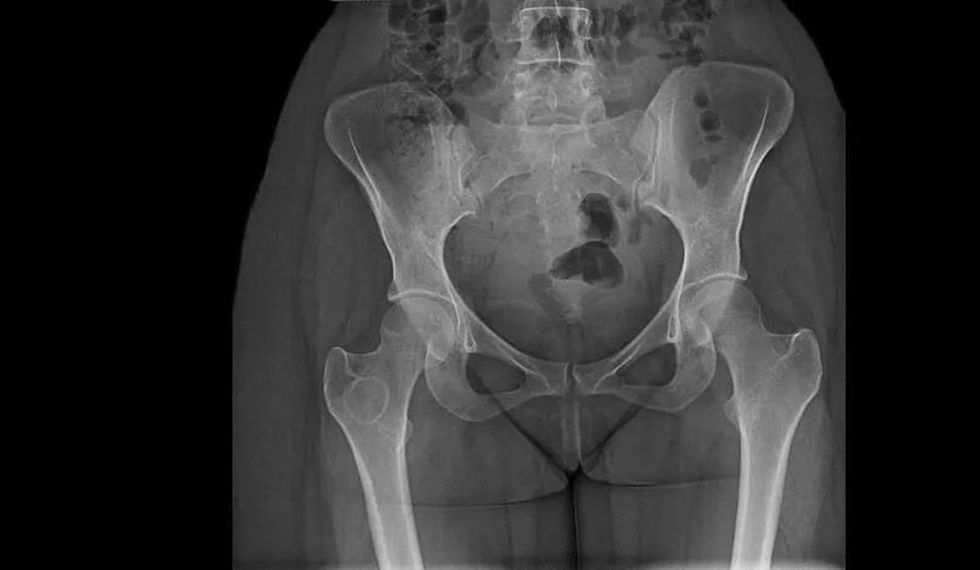
And, after discovering she could make stuffing animals her profession, she moved 1,700 miles to Missouri in 2016, enrolling at the Missouri Taxidermy Institute for a month-long course, to teach her the tricks of the trade.
Describing the city as “far more accepting of oddballs and misfits" than her native California, Simone now works full-time as a taxidermist, also teaching the skill at a local curiosities shop.
As well as stuffing animals, by removing the skin and wrapping it around a foam mold of the body, she also makes “wet specimens" – the name given to creatures preserved in alcohol.
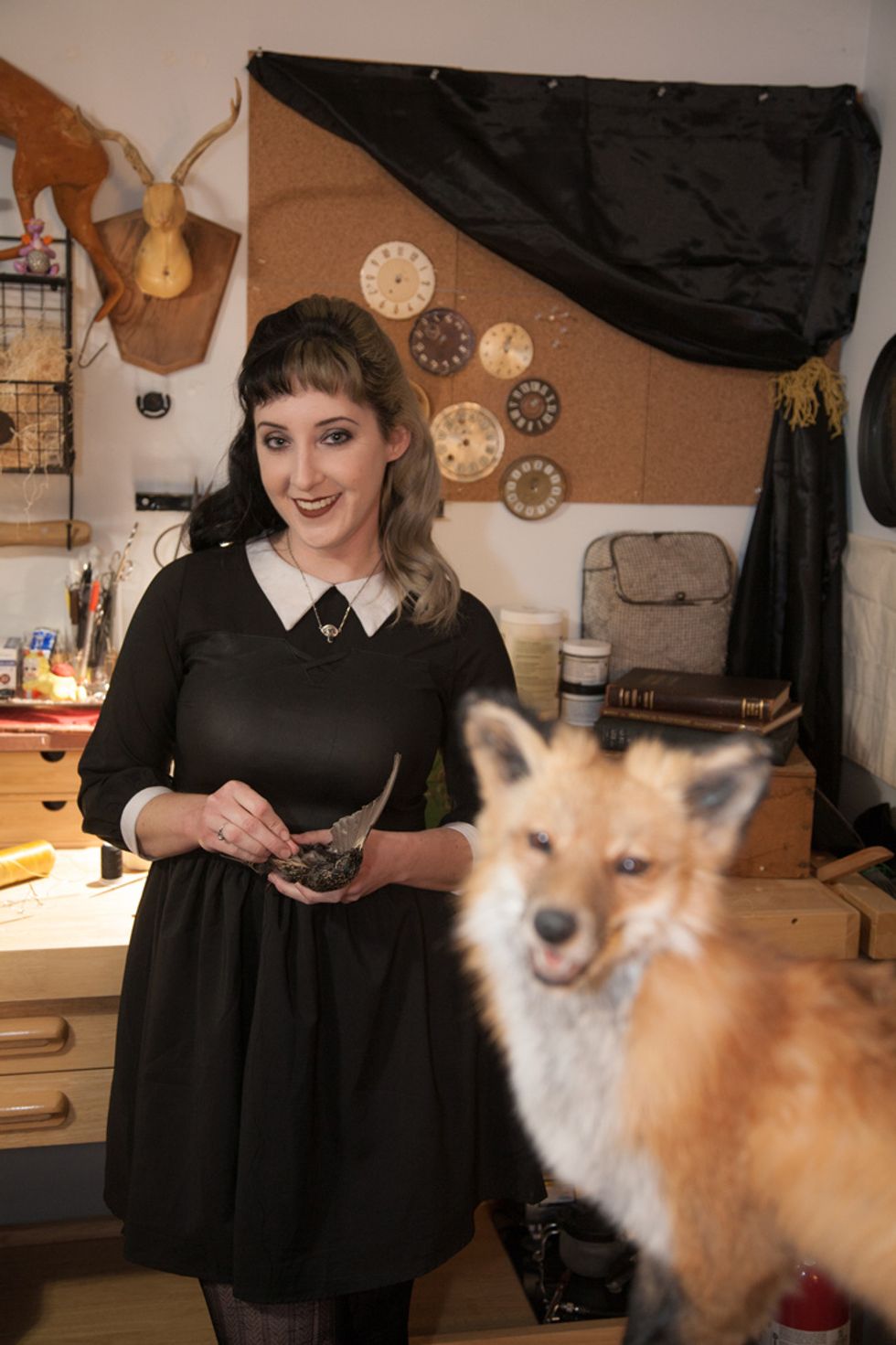
“I have all sorts of customers: from bereaved pet owners, to hunters, to curiosities collectors," she said, adding that the aim of her work is to recapture the soul of the dead animal.
“I stuff a lot of mice, rats and parakeets, and have made wet specimens with anything from fetal pigs to baby beavers, which I do by injecting the body with formalin, a preserving agent, then storing them in alcohol."
And, also commissioned to clean a number of skulls, her workforce of flesh-eating beetles is constantly growing.
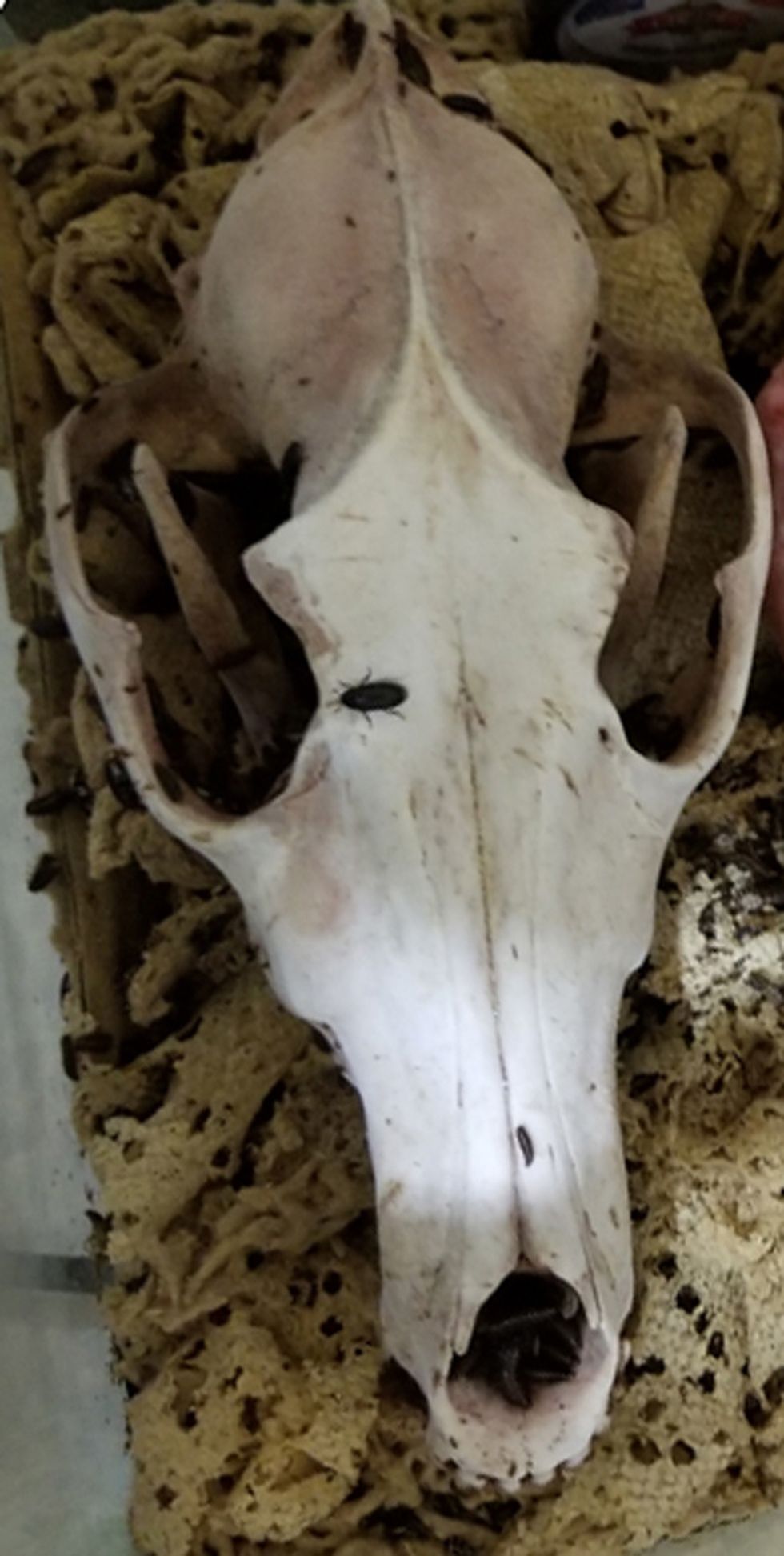
Bought for just $65 for a batch of approximately 200 critters, over the internet, she now has about a thousand, stored in three separate four-foot tanks.
She said:
“It's manageable at the moment, but I have to watch out because they can grow wings if the temperature gets above 26C – so I have to be careful to stop the mercury from rising too high."
But the beetles certainly earn their keep, hungrily gobbling up every scrap of flesh, after she skins the skull, scoops out the insides and places it in a tank.
º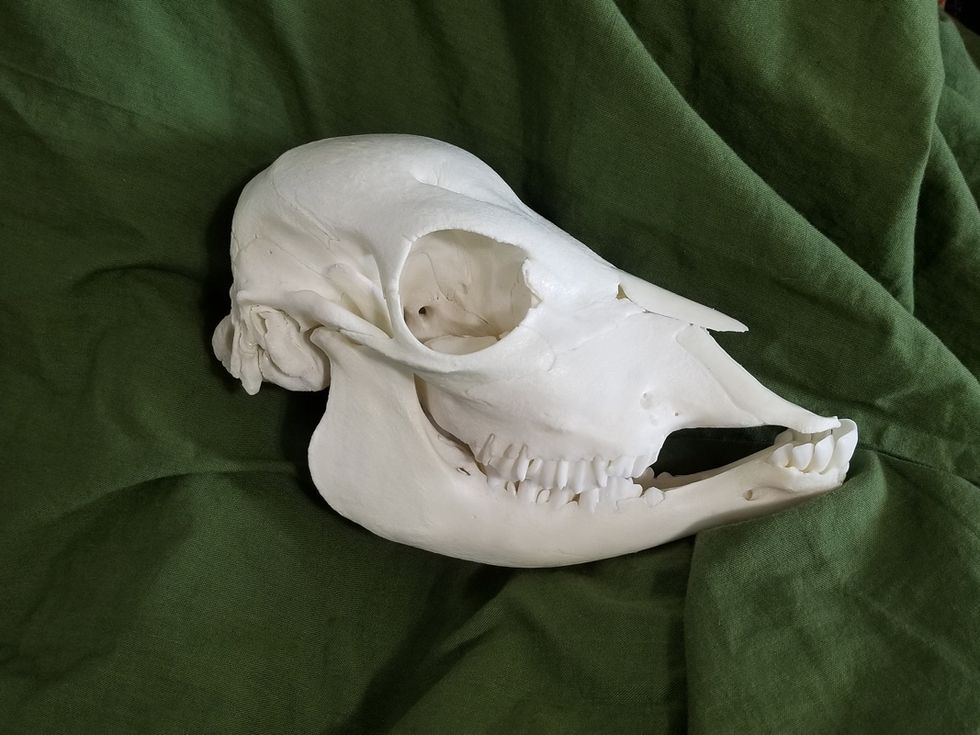
There is never any slacking, as they devour the meat on a deer skull in around two days, while a rodent cranium will be completely cleaned back to the bone in less than a day.
Thankfully, the beetles don't eat living flesh, so Simone happily allows them to crawl over her hands.
While she is happy to sing the praises of her six-legged co-workers and her “incredible" job, she has not always received positive reactions from others.
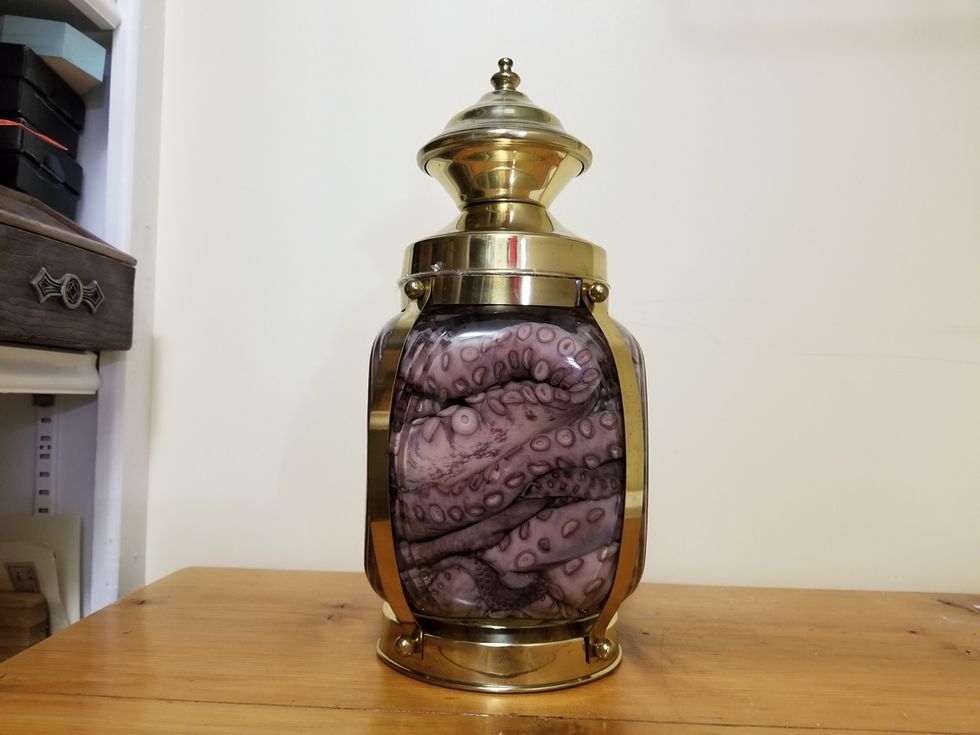
“I'm very aware of the fact that people thing what I do is morbid. People back in California treated me like an outcast for it and made me feel like a weirdo," she said.
“I used to also get quite a lot of hate mail back from people who thought that I was killing the animals and doing this for some freaky sense of satisfaction."
“But I never deal with anything that isn't already dead!"
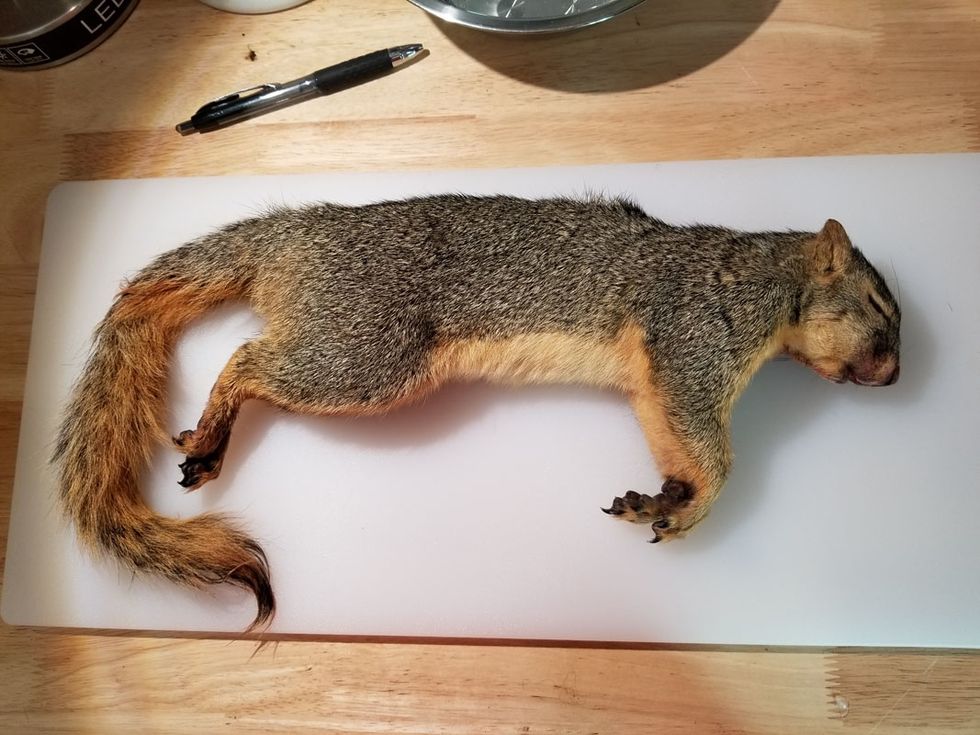
Her cabinet-maker boyfriend of 18 months, Andrew, however, fully supports her unusual craft.
She said:
“Andrew is very sweet and really likes what I do."
“He puts up with a lot, though, and having to share his kitchen freezer with a bag full of dead mice can sometimes be a bit much for him!"
A version of this article originally appeared on Press Association.
 COMICSANDS
COMICSANDS percolately
percolately georgetakei
georgetakei secondnexus
secondnexus george's picks
george's picks












